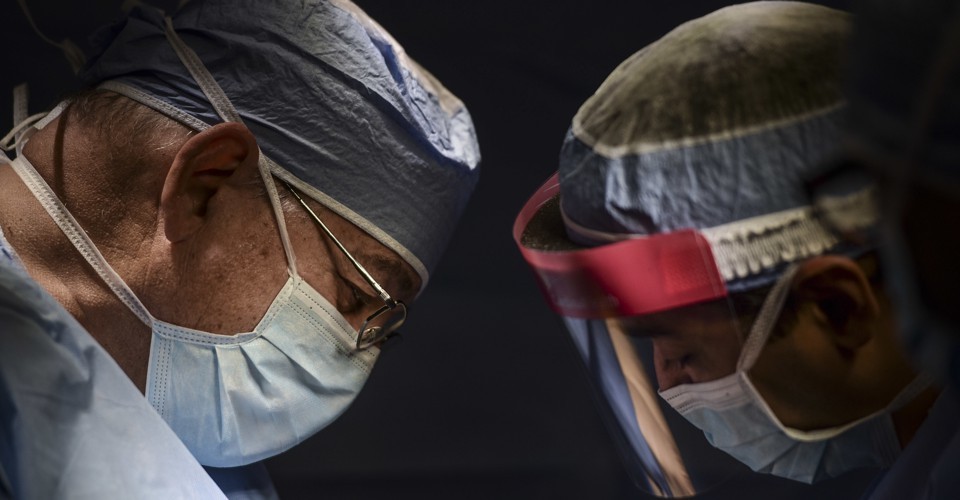Because of the expected growth in the nation’s population, recent forecasts have predicted the United States will have a deficit of as many as 29,000 surgeons by 2030, a shortfall that has made the successful training of the next generation of surgeons vital. Yet recent studies have shown that as many as 1 in 5 general surgery residents leave their training programs before completion to pursue other specialties.
A new study published today in the Journal of the American Medical Association Surgery(JAMA Surgery) found the attrition rate among residents training in general surgery was lower than previously determined — just 8.8 percent instead of 20 percent — in the 21 programs that researchers surveyed. The study also found that program directors’ attitudes and support for struggling residents and resident education were significantly different when the authors compared high- and low-attrition programs.
“Our survey found general surgery residents were more likely to complete their training in programs that offered more opportunities for formal or informal remediation programs that were designed to improve their deficiencies (or weaknesses)” says Christian de Virgilio, MD, an LA BioMed lead researcher and corresponding author for the study. “We feel that some program directors view themselves more as gatekeepers whose responsibility is to redirect general surgery residents who should not be surgeons, whereas others see themselves as shepherds whose role is to help guide those residents who are initially struggling to successfully complete the rigors of surgical residency.”

In this In this Oct. 7, 2016 photo, Dr. Reynold Lopez, left, a surgical oncologist, works hand in hand with resident physician Edgardo Cintron, during a thyroid surgery at Dr. Isaac González Martínez Oncological Hospital in San Juan, Puerto Rico. (AP Photo/Carlos Giusti)
General surgeons specialize in the most common surgical procedures, including abdominal, trauma, gastrointestinal, breast, cancer, endocrine, and skin and soft tissue surgeries. General surgery residency training follows medical school and generally requires five to seven years. The programs are offered through universities, university affiliated hospitals and independent programs.
Of the 21 programs surveyed for the JAMA Surgery study, 12 were university-based programs, three were affiliated with a university and six were independent. In those programs, 85 of the 966 general surgery residents failed to complete their training during the five-year period in the survey, July 1, 2010 to June 30, 2015. Of those who failed to complete their general surgery training, 15 left during the first year of training; 34 during the second year, and 36 during the third year or later.
Notably, the researchers found a nearly seven-fold difference between the training program with the lowest attrition rate (2.2 percent) and the one with the highest rate (14.3 percent) over the five-year period surveyed. In the programs with lower attrition rates, researchers found about one in five residents received some support or remediation to help ensure they would complete their general surgery training. In the programs with higher attrition rates, the researchers reported that only about one in 15 residents received such remediation.
“Residents’ early departures from their general surgery training programs can have an adverse impact on the morale of the other residents who continue in the program and on the training schedules for these programs,” says de Virgilio, who is the former director of the general surgery residency program at Harbor-UCLA Medical Center and the recipient of several teaching awards. “These losses also threaten both the individual programs and the medical profession’s ability to meet the future needs for general surgeons to care for our nation’s population.”
The researchers said further study is needed to fully understand how to reduce attrition rates, including a survey of a larger number of training programs.
The Association of American Medical Colleges, a nonprofit organization dedicated to the education of the nation’s future physicians, has predicted a shortage of surgeons by 2030, ranging from 19,800 to 29,000. The association found the number of surgeons in training remains about the same as in previous years but is not keeping pace with population growth, which is expected to grow by about 12 percent by 2030. Also by 2030, the number of U.S. residents aged 65 and older is expected to increase by 55 percent, and the number of people aged 75 and older will grow by 73 percent during the same period.
“Ensuring we have an adequate number of general surgeons will be important to the future health of our nation,” says de Virgilio.




